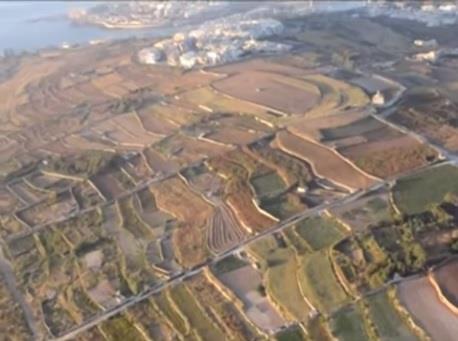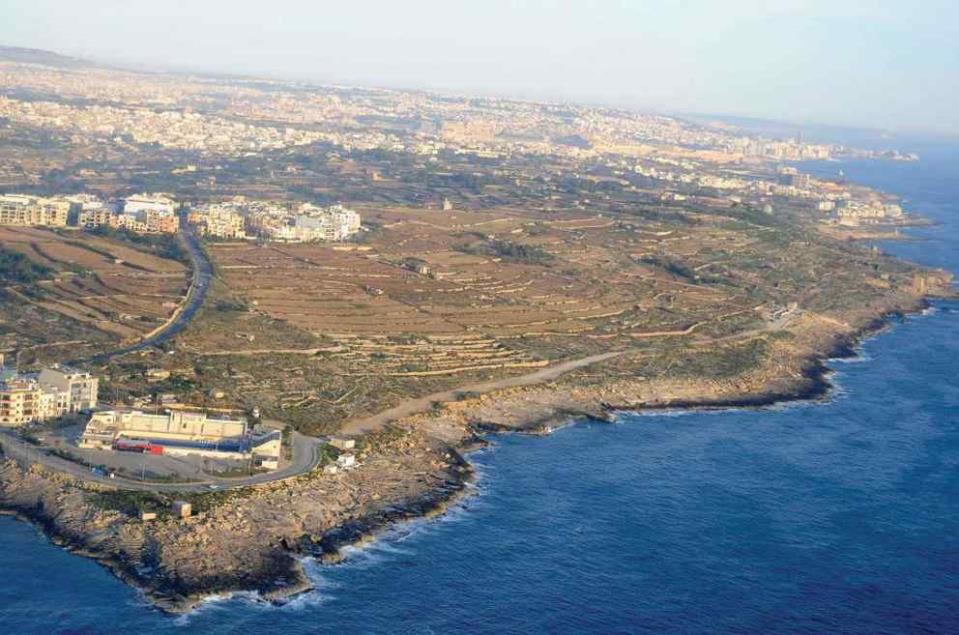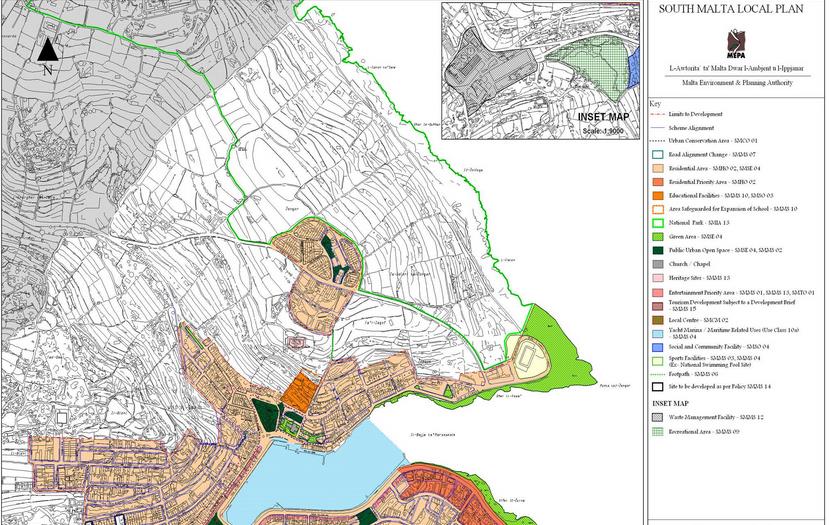The location chosen by Mepa, and supported by the government, to develop a new university campus is clearly marked as one not to be developed, according to policies by the same planning authority.
A tract of land between Xghajra, Zabbar and Zonqor Point Marsascala has been proposed for the development of a university campus after the government and a Jordanian investor signed a Heads of Agreement for the setting up of the American University of Malta.
The university campus will be spread over some 91,000 square metres of land but the whole project, including the proposed natural park, is expected to take up some 500 tumoli of land. In simple terms, around the area of 12 football grounds.

On the day of the signing, Prime Minister Joseph Muscat promised that an environment impact assessment will be carried out before the project can start, but no such thing has been presented so far, and the proposed location has been criticised by the Opposition, environmental NGOs, The Chamber of Commerce, the Church and Labour's MP Marlene Farrugia. But according to the government, developing an outside development zone for a university is justified.
Ironically, despite Mepa making the choice, the development is in direct conflict with its Malta South Local Plan and the Rural Policy Design Guidance, which clearly state that the site should only be used for informal recreation and that development which could impact protected species and their habitats should not be permitted.
Developments on the site had been pulled down by the authorities, because they were not supposed to be built there in the first place.

Mepa disqualified from being a just and independent player - Busuttil
Despite the Opposition supporting the development of a new university, it came out strongly against the proposal of it being built on pristine land. Leader of the Opposition Simon Busuttil argued that the government could easily find another site for the university campus, including St Luke's Hospital, the former Dowty factory in Marsa and the Petroleum Division in Birzebbuga, with the government immediately turning down the proposals.
Yesterday, a number of NGOs including Birdlife Malta, FKNK, Flimkien Ghal-Ambjent Ahjar, Rambler's Association, Friends of the Earth Malta and the Noise Abatement Society met up with the Opposition to discuss the best way forward.
Dr Busuttil said the location chosen is not appropriate, first because, by definition, it is an outside development zone, it is agricultural land and of ecological and scientific importance
"Mepa's role is to protect ODZ land and not to suggest its development. Mepa has disqualified itself from being a just and independent player," Dr Busuttil said. "If this becomes the norm, than the whole concept of an ODZ would be compromised."
The Malta South Local Plan states: "This local plan designates the area known as L-Ghassa tal-Munxar (Marsascala) and the coastal stretch between Il-Ponta taz-Zonqor (Marsascala) and Blata l-Bajda (Xghajra), as National Parks primarily for informal recreation (e.g. walking, cycling) and the appreciation of the ecological, geological, archaeological as well as cultural-historical features of these areas. Within these parks priority will be given to the conservation, protection and improvement of the natural and cultural-historical heritage."
The Rural Policy and Design Guidance clearly states that "proposals which would damage and/or disturb (directly or indirectly) any protected species of wild flora or fauna and/or any habitat of protected species of wild flora or fauna, whether man-made or natural, and including any important breeding, rearing or resting sites, will not be permitted, unless the Authority is certain that all legal requirements and conditions of the relevant environmental regulations are satisfied".

Disposal of excavation material and use of access road questioned
As regards the impact on marine life, marine biologist Alan Deidun said that despite the project being further away from the coastline than other proposals for development in the area, there are still concerns.
Firstly, he questioned which road would be used to access the site, given the existing road is close to the coastline. Second, Professor Deidun asked where the material that is excavated will be disposed.
He stressed that the site selection report by the planning authority should be made public and Mepa should come clear as to how it expects to act as judge and jury in the case. "How can Mepa evaluate the environment impact report on a site it chose itself?" Prof. Deidun asked.
This week, The Malta Independent spoke to a number of farmers, all of whom fear that their land will be taken away by the government to make way for the development. The farmers appealed to the government not to take their livelihoods away and to develop the so-called 'American University of Malta' at the former Jerma hotel site instead.

Hunters' Association calls on government to reconsider
In a statement, the Federation for Hunting and Conservation - Malta (FKNK) called on the government to examine all possibilities for the said building to be erected in another area, where possibly what little that is left of the Maltese Islands' natural and agricultural land will not be lost.
It also appealed to the government and Mepa to ensure that all necessary environmental impact assessments are carried out, such that the objectives of opportunity for educational development are not lost, but without causing irreversible damage to our natural environment.
As for the establishment of a Nature Park, also part of the project, the FKNK awaits a meeting with the competent authorities to obtain further details about this development.